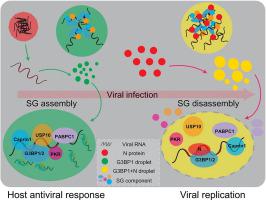Science Bulletin ( IF 18.8 ) Pub Date : 2021-07-13 , DOI: 10.1016/j.scib.2021.07.011 Cong Ma 1 , Ping Fang 1 , Zhao-Ran Liu 1 , Shi-Shuo Xu 1 , Kun Xu 2 , Xu Cheng 3 , Aiwen Lei 4 , Hai-Chao Xu 5 , Chengchu Zeng 2 , Tian-Sheng Mei 1

|
Organic electrosynthesis has been widely used as an environmentally conscious alternative to conventional methods for redox reactions because it utilizes electric current as a traceless redox agent instead of chemical redox agents. Indirect electrolysis employing a redox catalyst has received tremendous attention, since it provides various advantages compared to direct electrolysis. With indirect electrolysis, overpotential of electron transfer can be avoided, which is inherently milder, thus wide functional group tolerance can be achieved. Additionally, chemoselectivity, regioselectivity, and stereoselectivity can be tuned by the redox catalysts used in indirect electrolysis. Furthermore, electrode passivation can be avoided by preventing the formation of polymer films on the electrode surface. Common redox catalysts include N-oxyl radicals, hypervalent iodine species, halides, amines, benzoquinones (such as DDQ and tetrachlorobenzoquinone), and transition metals. In recent years, great progress has been made in the field of indirect organic electrosynthesis using transition metals as redox catalysts for reaction classes including C–H functionalization, radical cyclization, and cross-coupling of aryl halides-each owing to the diverse reactivity and accessible oxidation states of transition metals. Although various reviews of organic electrosynthesis are available, there is a lack of articles that focus on recent research progress in the area of indirect electrolysis using transition metals, which is the impetus for this review.
中文翻译:

以过渡金属配合物为电催化剂的有机电合成研究进展
有机电合成已被广泛用作传统氧化还原反应方法的环保替代方法,因为它利用电流作为无痕氧化还原剂而不是化学氧化还原剂。使用氧化还原催化剂的间接电解受到了极大的关注,因为它与直接电解相比具有多种优势。通过间接电解,可以避免电子转移的过电位,这本身就更温和,从而可以实现广泛的官能团耐受性。此外,化学选择性、区域选择性和立体选择性可以通过间接电解中使用的氧化还原催化剂进行调节。此外,可以通过防止在电极表面形成聚合物膜来避免电极钝化。常见的氧化还原催化剂包括N-氧基自由基、高价碘物质、卤化物、胺、苯醌(如 DDQ 和四氯苯醌)和过渡金属。近年来,在使用过渡金属作为氧化还原催化剂的间接有机电合成领域取得了很大进展,这些反应类别包括芳基卤化物的 C-H 功能化、自由基环化和交叉偶联——每一种都由于不同的反应性和可及性过渡金属的氧化态。尽管有各种关于有机电合成的综述,但缺乏关注过渡金属间接电解领域近期研究进展的文章,这是本文综述的推动力。









































 京公网安备 11010802027423号
京公网安备 11010802027423号